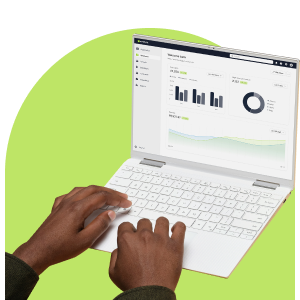
The hospitality industry wasn’t only hit hard during the Covid-19 pandemic, it was transformed. Specifically, customer experience has shifted. For example, customers now value new experiences over brand loyalty and expect digitalisation for greater flexibility. Since customer experience was the key driver of business growth in 2022, it’s an important consideration. This is why we’re outlining three ways hospitality businesses can use email marketing tools to unlock the magic of good communication and transform your customer experience.
1. Learn More About Your Customers
Loyalty plays a major role in customer experience, and the first step in fostering loyalty is making your customers feel valued. To do this successfully through your email marketing, you need to gather information about your customers.
A subscription form is an email marketing tool that can help you easily collect data lists and information about your customers.
For your hospitality business, you could use a subscription form to:
- Collect contact data by asking customers to sign up for your mailing list so you can keep them informed. For example, you can share offers like special packages for romantic getaways or experiences like wine-and-food pairings. Ensure you build your subscription form succinctly, so you collect only the info you need, like name, email address, and perhaps their birthday. You could also ask whether they have children so you can send them school holiday promotions. In this blog post, we describe how to spice up your communications by naming them something other than a “newsletter”.
- Sign up potential customers who would like more information about a particular offer or service. An example is to ask them to sign up for a demo, and you can then nurture these contacts through the sales funnel, for example to encourage them to book their function at your venue, or a stay at your hotel.
- Gather feedback from your customers to improve your services and to share as testimonials, like feedback on how they enjoyed their meals or stay– so long as you have consent to do so.
- Register customers for particular events, like picnics on the lawn and music festivals, or programmes, like loyalty memberships.
Customers aren’t likely to sign up for the sake of it, so it’s important to state clearly why they should fill out your form. You may wish to offer them something in return, such as content or a discount on their first order or booking. We share more ideas in this blog post.
Your subscription form, like your website, is a reflection of your business, so you want to ensure you are offering the best customer experience.
You can do this by:
- Keeping the presentation of your subscription form in line with your webpage design.
- Asking for necessary information only.
- Assuring customers their information will be protected. In South Africa, emails are subject to the Consumer Protection Act and the Protection of Personal Information Act, so creating a double-opt-in functionality on your form is important for compliance.
- Thanking them for subscribing.
Once you have subscribers, you’ll need to practice good list hygiene to ensure the contacts you are emailing stay engaged, which will help to ensure your campaigns are effective.
In a bid to prevent your subscribers from becoming disengaged or unsubscribing from your list, it’s important to ensure you are clear about the intention of your emails from the get-go, so your audience knows why they are signing up for them. You’ll need to keep your content relevant and ensure your email doesn’t look like spam.
Learn six best practices for building your subscription forms to take your email marketing to the next level in this blog post.
2. Send Personalised Emails at Scale
Once you’ve compliantly collected your customers’ contact data, you can start sending eye-catching and personalised emails at precise times with strategic delays to showcase your services. But you don’t need to send each email manually.
You need a platform fitted with email marketing tools, like personalisation and automation, to allow you to customise certain sections of your bulk emails.
You can implement personalisation by using:
- Custom Fields to personalise parts of your message based on your specific data, for example, greeting recipients by name.
- Personalisation Tags to customise messages with the data you’ve collected from your recipients. For example, you can make suggestions for entertainment based on the area they live in or are travelling to.
- Filters and Tags (including contact tags and interest-based tags) to segment data so you can send targeted communication. Interest-based tagging categorises the content your contacts interact with so you can personalise messages based on your contacts’ interests. You could upsell a better package to your existing travellers or entice someone who often clicks on your spa content to visit your facility.
- Dynamic Content to send different, customised content to different audiences in a bid to improve client experience and save you time. This is handy when you want to market specials to certain customers only.
- Dynamic Attachments to automatically send certain attachments to your various recipients so you don’t have to manage each attachment manually.
You can take your customer experience a step further with automation. This allows you to automate your personalised marketing messaging so you can send communication at scale and at relevant times to nurture your customers without manually sending messages. An example is sending a personalised, automated birthday message to a customer on their special day.
Automation can help you nurture your customer experience in many ways.
Some of these include:
- Trigger personalised messaging based on your contact data, interests, and engagement.
- Auto-respond to customers, for example, when they sign up for your newsletter or to re-engage with those who haven’t interacted with your content for a while.
- Communicate at relevant times to keep your customers informed, for example sending welcome campaigns when people arrive at your destination, which you could use to entice them to visit your restaurant or spa.
- Connect with leads at key times by using workflows and/or integrations. You could send a survey after your client has visited your establishment to get their feedback.
To amplify the effectiveness of your campaigns, check out this blog post: 5 Ways to Ensure Your Personalised Email Hits the Mark.
3. Understand How Your Emails Perform
Once you’ve sent a few campaigns, it’s important to measure how they perform so you can understand how your customers are interacting with your content. This will allow you to tweak your content depending on how your contacts respond to it on an ongoing basis so you can continually improve your engagement. Keeping your subscribers happy will help you to boost your business.
There are many reporting tools you can use to measure your campaign performance effectively.
For email, it’s useful to consider:
- Opens
- Clicks
- Click-to-open rate
- Social shares
- Unsubscribes
- Complaints
- Bounces
- Forwards
- Profile updates
- Geo-location
- Click heatmaps (to find out where your readers are clicking in your emails)
- Device used
Learn more about the email metrics you can use to help you make data-backed decisions in this blog post.
Email Marketing Tools Boost Customer Experience
The Covid-19 pandemic has likely shifted the customer experience philosophy of your hospitality business, but you don’t need to panic. Email marketing tools like subscription forms, personalisation, automation, and reporting tools ensure your messaging is customised and specific to make each client feel you are speaking to them while saving you time from manually sending individual messages.
Supersede Hospitality Customers’ Expectations
In the hospitality business, you need to connect with your customers as individuals. Having a platform fitted with email marketing tools to help you collect subscriber data, personalise and automate emails at scale, and measure the performance of your comms will go a long way in helping you attract and retain clients.


